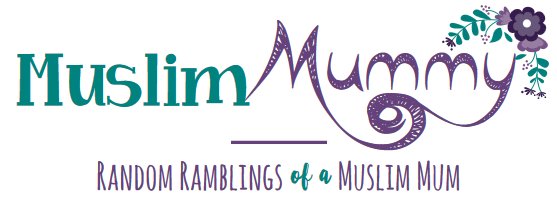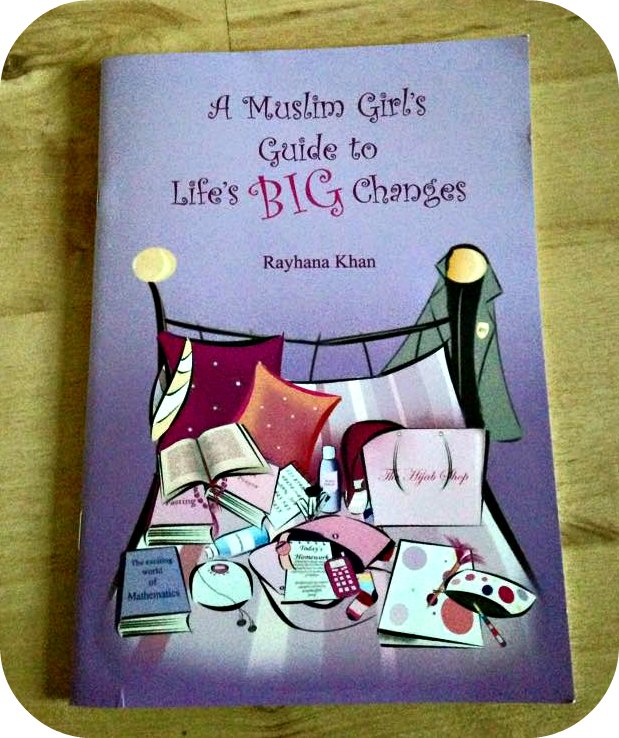As Munchkin is 8 I need to start thinking about puberty. Some mums argue is it too young, but when girls are hitting puberty as young as 9, then it is better to be safe than sorry and make sure she understands about life’s changes.
My parents never had the talk with me. I hit puberty quite late, and to be honest what I learnt was from school. When I did hit puberty, I still wasn’t given a talk to explain it all. For some reason, it was seen as almost shameful. I was so grateful at that time for having learnt at school, mostly through friends what was happening and what to expect.
I don’t want that to happen to my daughter. I want her to be able to come to me with confidence if she needs to ask anything, to have my full support and not feel ashamed.
So when I heard there was a book for Muslim girls, helping to explain all these changes I immediately ordered it.
‘Written from a ‘big sister’ perspective, A Muslim Girl’s Guide to Life’s Big Changes explains all, from choosing the right friendship group, advice about school life and social life, to the physical changes you will experience from the age of 9 onwards.’
The book itself is only 32 pages long. So do not expect it to be a fully comprehensive guide answering all of life’s questions. However, seeing as it is aimed at 9-11 year olds, the size of the book is appropriate and covers the basics that are needed with the following topics covered:
- School life
- What do we believe in?
- What are you wearing?
- How are you behaving?
- How are you spending your time?
- What’s happening to your body?
- Taking care of your body
Although brief, what I like about the book is it explains puberty in simple terms. Explains about periods, that you will bleed, you may feel tired and irritable and may have cramps etc. It is also explained that you cannot pray salah and explains that you need to take a special bath after to purify yourself.
The book explains how it may be difficult at school, seeing friends do things that for us are haraam, but that as a Muslim things like smoking and drinking are haraam and we must remember this.
In regards to behaviour, friends, parents, teachers and boys are briefly touched upon.
There are some issues I personally have with the book in that it says you should avoid dying your hair with anything other than henna and that temporary tattoos including dots on the forehead are not allowed. As far as I am aware, these aren’t actually sins. (Feel free to correct me if I am wrong). But all in all, it is good for providing a basis for topics that you would want to discuss in detail with your daughters.
“The person who is put to a test because of the birth of the daughters and then he treats them generously, they will become a means of rescue for him from Hell.”
(Bukhari, Muslim).


MashaAllah it sounds like it might be a useful little book to have on hand when for when we get to that stage. As for dots on the forehead, I read that since they’re a Hindu tradition (third eye or something?) then it’s considered imitating the disbelievers and therefore haraam. Got to sources for that tho I’m afraid.
Ah OK, that makes sense, thanks.
Salam
As the author of this book, I appreciate your review and honest comments 🙂 may Allah guide all those who come across the guide.
As the sister rightly pointed out we should refrain from placing dots on forehead as this is a tradition taken from th Hindus.
With regards to colouring the hair, many modern day hair colourings contain chemicals which infact coat the hair which do not allow water to reach the roots which in turn invalidates our wudhu. Thank you for raising the points and perhaps this is an area that needs to be explained better in future editions iA.
Wasalaam
Rayhana Khan (Oxford-UK)
Wsalaam thank you for taking the time out to comment. Yes in sha Allah might help for those who don’t understand the ‘why’
I think it’s a good start for her, cause it’s a strange period to go through and it’s better when things are explained a bit.
Take care.
xx
marie Pop recently posted…Lost Christmas
Sounds like a good book and something that you could read together? Then you could answer any immediate questions she has. Maybe you could even write a book your other girls like your daughter? I come from a family of ‘early developers’ and my mum had the ‘talk’ with me when I was about 7 or 8.
I agree with the author about the red dot on forehead. It’s a symbol of a married hindu woman. Some Muslims from the subcontinent Pakistan, India, Bangladesh etc still do this as this from the pre Islamic ancestors who practiced Hinduism. So we should not be wearing it. It’s like wearing a cross or star of David.